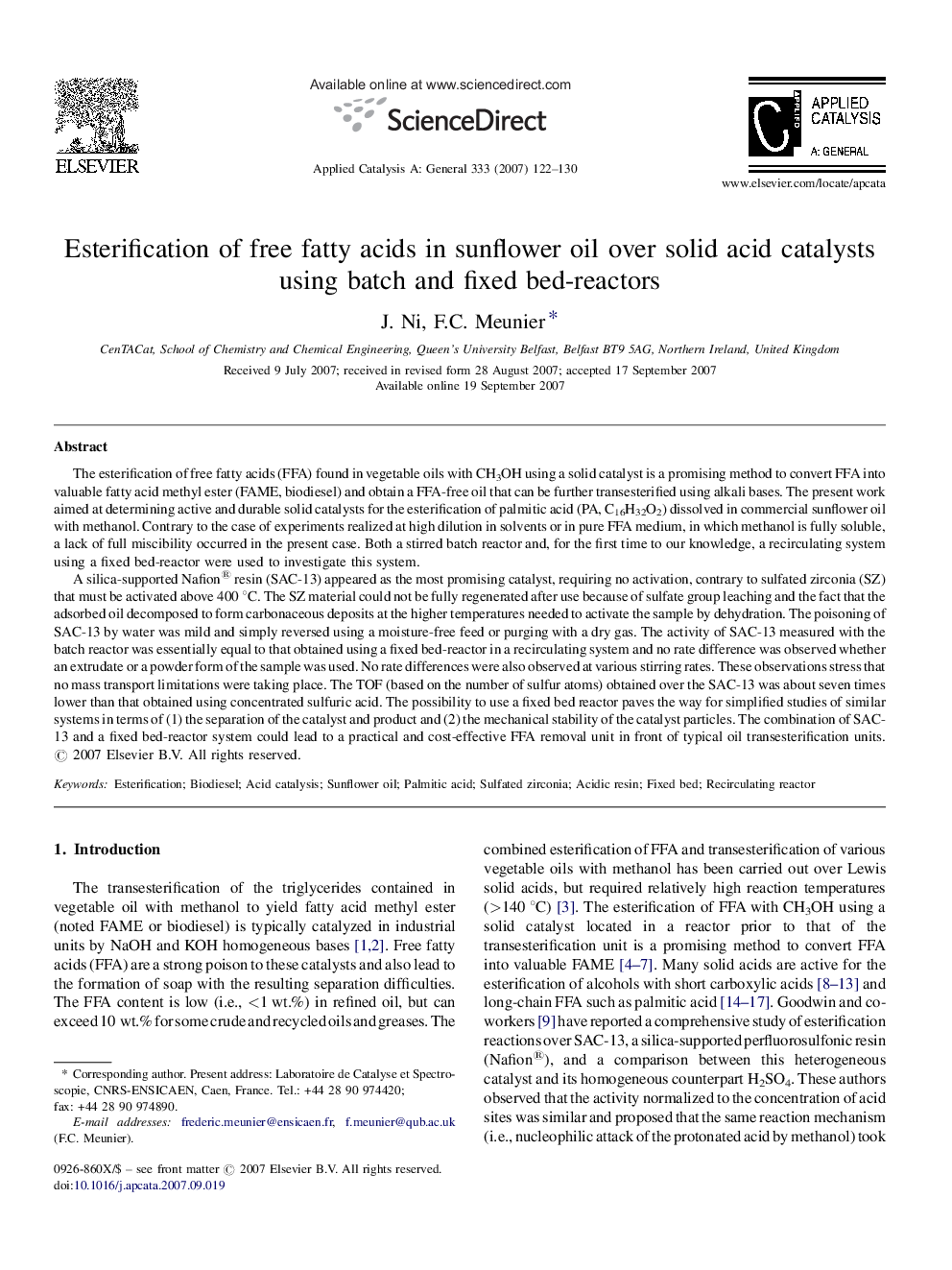| کد مقاله | کد نشریه | سال انتشار | مقاله انگلیسی | نسخه تمام متن |
|---|---|---|---|---|
| 43370 | 45966 | 2007 | 9 صفحه PDF | دانلود رایگان |

The esterification of free fatty acids (FFA) found in vegetable oils with CH3OH using a solid catalyst is a promising method to convert FFA into valuable fatty acid methyl ester (FAME, biodiesel) and obtain a FFA-free oil that can be further transesterified using alkali bases. The present work aimed at determining active and durable solid catalysts for the esterification of palmitic acid (PA, C16H32O2) dissolved in commercial sunflower oil with methanol. Contrary to the case of experiments realized at high dilution in solvents or in pure FFA medium, in which methanol is fully soluble, a lack of full miscibility occurred in the present case. Both a stirred batch reactor and, for the first time to our knowledge, a recirculating system using a fixed bed-reactor were used to investigate this system.A silica-supported Nafion® resin (SAC-13) appeared as the most promising catalyst, requiring no activation, contrary to sulfated zirconia (SZ) that must be activated above 400 °C. The SZ material could not be fully regenerated after use because of sulfate group leaching and the fact that the adsorbed oil decomposed to form carbonaceous deposits at the higher temperatures needed to activate the sample by dehydration. The poisoning of SAC-13 by water was mild and simply reversed using a moisture-free feed or purging with a dry gas. The activity of SAC-13 measured with the batch reactor was essentially equal to that obtained using a fixed bed-reactor in a recirculating system and no rate difference was observed whether an extrudate or a powder form of the sample was used. No rate differences were also observed at various stirring rates. These observations stress that no mass transport limitations were taking place. The TOF (based on the number of sulfur atoms) obtained over the SAC-13 was about seven times lower than that obtained using concentrated sulfuric acid. The possibility to use a fixed bed reactor paves the way for simplified studies of similar systems in terms of (1) the separation of the catalyst and product and (2) the mechanical stability of the catalyst particles. The combination of SAC-13 and a fixed bed-reactor system could lead to a practical and cost-effective FFA removal unit in front of typical oil transesterification units.
This work aimed at determining active and durable solid catalysts for the esterification of palmitic acid (C16H32O2) dissolved in commercial sunflower oil with methanol. Both a stirred batch reactor and, for the first time to our knowledge, a recirculating system using a fixed bed-reactor were used to investigate this system. A silica-supported Nafion® resin (SAC-13) appeared as the most promising catalyst, which could be reused many times without showing any significant deactivation.Figure optionsDownload as PowerPoint slide
Journal: Applied Catalysis A: General - Volume 333, Issue 1, 3 December 2007, Pages 122–130